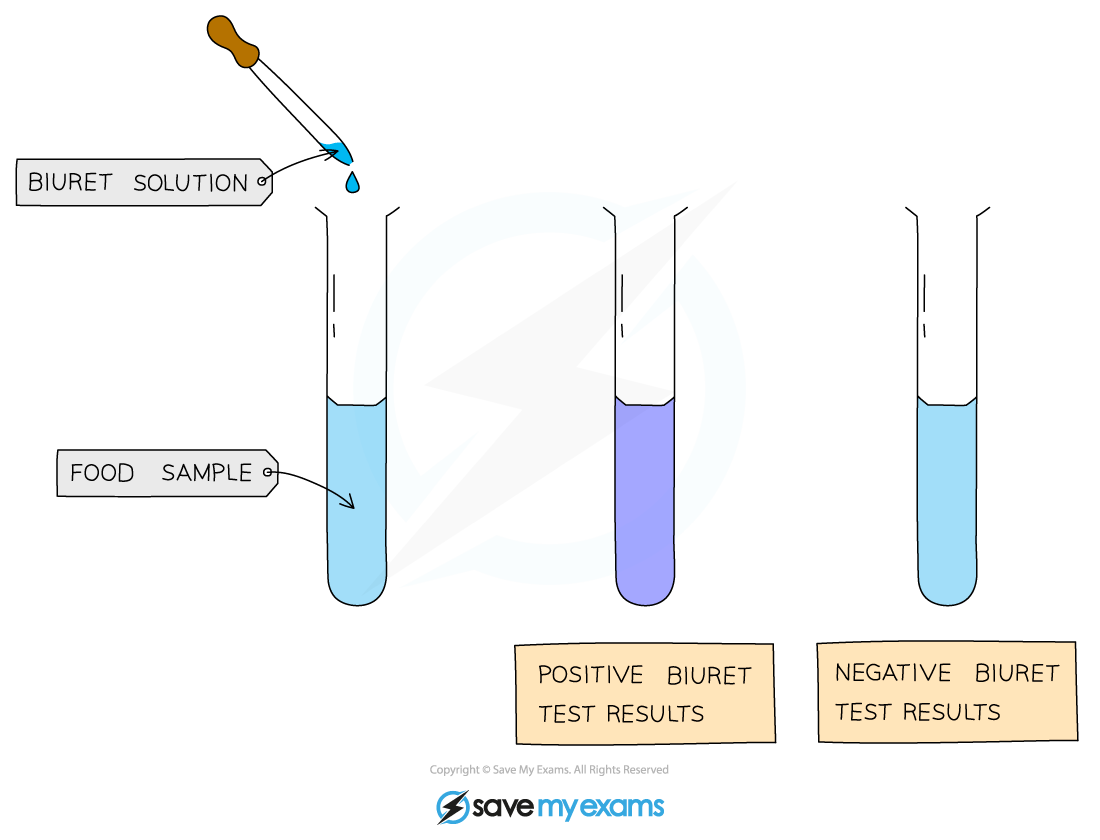- 翰林提供学术活动、国际课程、科研项目一站式留学背景提升服务!
- 400 888 0080
AQA A Level Biology复习笔记1.3.5 Biochemical Tests: Proteins
Biochemical Tests: Proteins
The biuret test for proteins
- A liquid solution of a sample is treated with sodium or potassium hydroxide to make the solution alkaline
- A few drops of copper (II) sulfate solution (which is blue) is added to the sample
- Biuret ‘reagent’ contains an alkali and copper (II) sulfate
- If a colour change is observed from blue to lilac/purple, then protein is present.
- The colour change can be very subtle, it’s wise to hold the test tubes up against a white tile when making observations)
- If no colour change is observed, no protein is present
- For this test to work, there must be at least two peptide bonds present in any protein molecules, so if the sample contains amino acids or dipeptides, the result will be negative
- The Biuret test is qualitative - it does not give a quantitative value as to the amount of protein present in a sample

A positive colour change produces a lilac/purple colour.
转载自savemyexams

早鸟钜惠!翰林2025暑期班课上线

最新发布
© 2025. All Rights Reserved. 沪ICP备2023009024号-1








